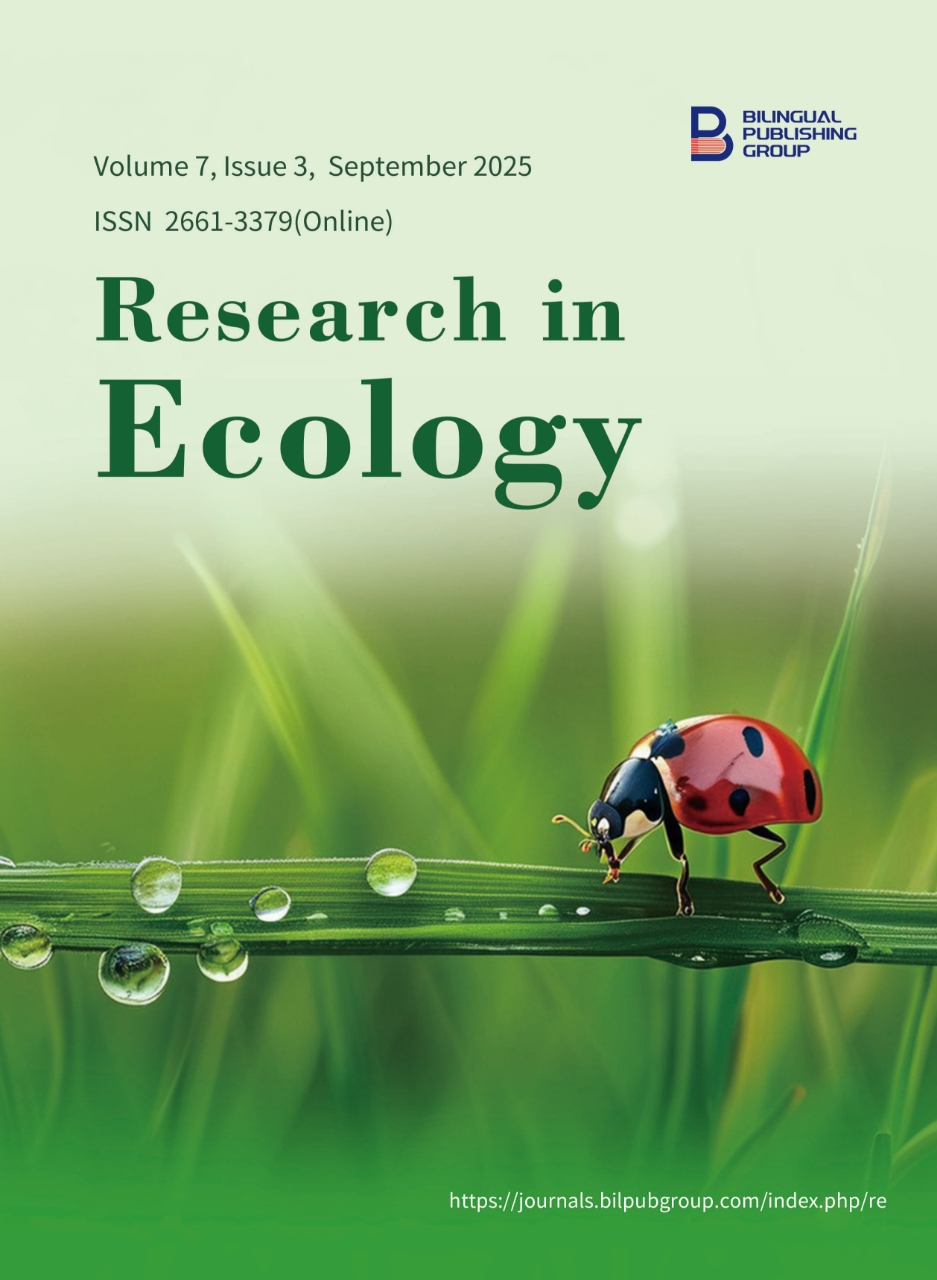
Spatio-Temporal Assessment of Land Use Changes in Sonipat, Haryana: Socio Economic Impacts and Policy Intervention
DOI:
https://doi.org/10.30564/re.v7i3.10121Abstract
This study examines the effects of rapid land use changes in India, with a specific focus on Sonipat District in Haryana—a region undergoing significant urban expansion. Over the past two decades, rural landscapes in Sonipat have undergone notable transformation, as open spaces and agricultural lands are increasingly converted into residential colonies, commercial hubs, and industrial zones. While such changes reflect economic development and urban growth, they also raise critical concerns about sustainability, especially in terms of food security, groundwater depletion, and environmental degradation. The study examines land use changes between 2000 and 2024 using remote sensing techniques and spatial analysis. It further incorporates secondary data and insights from community-level interactions to assess the socio-economic and ecological impacts of this transformation. The findings indicate rising land fragmentation, loss of agricultural livelihoods, pressure on civic infrastructure, and increasing pollution—factors that threaten long-term regional sustainability. The study underscores the urgent need to reconcile urban development with environmental and social sustainability. By offering a detailed case study of Sonipat, this research contributes to the broader discourse on India’s urbanisation pathways. It aims to provide policymakers, planners, and researchers with evidence-based recommendations to manage land transitions more responsibly, promoting urban growth models that ensure ecological integrity, equitable development, and long-term resilience.
Keywords:
Land Use; Spatio-Temporal Dynamics; Socio-Economic Impacts; Urbanization; PolicyReferences
[1] Nishit, Anand, S., 2022. Geospatial Analysis of Land Use and Land Cover of Delhi. Innovations. 71, 437–453.
[2] Zheng, X.-Q., Zhao, L., Xiang, W.-N., et al., 2012. A coupled model for simulating spatio-temporal dynamics of land-use change: A case study in Changqing, Jinan, China. Landscape and Urban Planning. 106(1), 51–61. DOI: https://doi.org/10.1016/j.landurbplan.2012.02.006
[3] Gidey, E., Dikinya, O., Sebego, R., et al., 2017. Modeling the Spatio-temporal dynamics and evolution of land use and land cover (1984–2015) using remote sensing and GIS in Raya, Northern Ethiopia. Modeling Earth Systems and Environment. 3(4), 1285–1301. DOI: https://doi.org/10.1007/s40808-017-0375-z
[4] Akubia, J.E., Bruns, A., 2019. Unravelling Frontiers of Urban Growth: Spatio-Temporal Dynamics of Land-Use Change and Urban Expansion in Greater Accra Metropolitan Area, Ghana. Land. 8(9), 131. DOI: https://doi.org/10.3390/land8090131
[5] Sapena, M., Ruiz, L.Á., 2019. Analysis of land use/land cover spatio-temporal metrics and population dynamics for urban growth characterization. Computers, Environment and Urban Systems. 73, 27–39. DOI: https://doi.org/10.1016/j.compenvurbsys.2018.08.001
[6] Kogo, B.K., Kumar, L., Koech, R., 2021. Analysis of spatio-temporal dynamics of land use and cover changes in Western Kenya. Geocarto International. 36(4), 376–391. DOI: https://doi.org/10.1080/10106049.2019.1608594
[7] Abraham, A., Kundapura, S., 2022. Spatio-temporal Dynamics of Land Use Land Cover Changes and Future Prediction Using Geospatial Techniques. Journal of the Indian Society of Remote Sensing. 50(11), 2175–2191. DOI: https://doi.org/10.1007/s12524-022-01588-7
[8] Saini, S.S., Kaushik, S., 2011. Land Use Changes in Haryana Sub-Region of Chandigarh Periphery Controlled Area: A Spatio-Temporal Study. Institute of Town Planners, India Journal. 8(4), 96–106.
[9] Mondal, M.S., Sharma, N., Kappas, M., Garg, P., 2013. Modeling of spatio-temporal dynamics of land user in Brahmaputra River basin using Geoinfo techniques. Geocarto International. 28(7), 632–656. DOI: https://doi.org/10.1080/10106049.2013.776641
[10] Kar, R., Reddy, G.O., Kumar, N., et al., 2018. Monitoring spatio-temporal dynamics of urban and peri-urban landscape using remote sensing and GIS – A case study from Central India. The Egyptian Journal of Remote Sensing and Space Science. 21(3), 401–411. DOI: https://doi.org/10.1016/j.ejrs.2017.12.006
[11] Moulds, S., Buytaert, W., Mijic, A., 2018. A spatio-temporal land use and land cover reconstruction for India from 1960–2010. Scientific Data. 5(1), 1–11. DOI: https://doi.org/10.1038/sdata.2018.159
[12] Mishra, V.N., 2018. Prediction of spatio-temporal land use/land cover dynamics in rapidly developing Varanasi district of Uttar Pradesh, India, using geospatial approach: a comparison of hybrid models. Applied Geomatics. 10(3), 257–276. DOI: https://doi.org/10.1007/s12518-018-0223-5
[13] Rani, P., 2019. Changing Land Use Pattern in Haryana: A Spatio-Temporal Study. International Journal of Research and Analytical Reviews. 6(2), 567–573.
[14] Nishit, Pandey, B.W., Anand, S., et al., 2021. Demographic Transformation, Landuse Change and its Environmental Implications in Kotla - Mubarakpur, New Delhi. Indian Journal of Spatial Science. 12(1), 29–38.
[15] Kumar, N., Rana, T.S., Anand, S., 2025. Exploring the Interplay of Land Use Transformation and Its Environmental Impacts: A Case Study of Sonipat District, Haryana. Journal of Environmental & Earth Sciences. 7(2), 76–88. DOI: https://doi.org/10.30564/jees.v7i2.7997
[16] Thomas, D.S., Sporton, D., 1997. Understanding the dynamics of social and environmental variability: The impacts of structural land use change on the environment and peoples of the Kalahari, Botswana. Applied Geography. 17(1), 11–27. DOI: https://doi.org/10.1016/S0143-6228(96)00027-6
[17] Kumpula, T., 2011. Land use and land cover change in Arctic Russia: Ecological and social implications of industrial development. Global Environmental Change. 21(2), 550–562. DOI: https://doi.org/10.1016/j.gloenvcha.2010.12.010
[18] Williams, K.J., Schirmer, J., 2012. Understanding the relationship between social change and its impacts: The experience of rural land use change in south-eastern Australia. Journal of Rural Studies. 28(4), 538–548. DOI: https://doi.org/10.1016/j.jrurstud.2012.05.002
[19] Quintas-Soriano, C., Castro, A.J., Castro, H., et al., 2016. Impacts of land use change on ecosystem services and implications for human well-being in Spanish drylands. Land Use Policy. 54, 534–548. DOI: https://doi.org/10.1016/j.landusepol.2016.03.011
[20] Bhattarai, G., Srivastava, P., Hatch, U., 2008. Assessment of Economic and Water Quality Impacts of Land Use Change Using a Simple Bioeconomic Model. Environmental Management. 42(1), 122–131. DOI: https://doi.org/10.1007/s00267-008-9111-9
[21] Deng, J.S., Wang, K., Hong, Y., et al., 2009. Spatio-temporal dynamics and evolution of land use change in response to rapid urbanization. Landscape and Urban Planning. 92(3–4), 187–198. DOI: https://doi.org/10.1016/j.landurbplan.2009.05.001
[22] Polasky, S., Nelson, E., Pennington, D., et al., 2011. The Impact of Land-Use Change on Ecosystem Services, Biodiversity and Returns to Landowners: A Case Study in the State of Minnesota. Environmental and Resource Economics. 48, 219–242. DOI: https://doi.org/10.1007/s10640-010-9407-0
[23] Ma, L., Cheng, W., Bo, J., et al., 2018. Spatio-Temporal Variation of Land-Use Intensity from a Multi-Perspective— Shule River Basin in China as an Example. Sustainability. 10(3), 771. DOI: https://doi.org/10.3390/su10030771
[24] Lawler, J.J., Lewis, D.J., Nelson, E., et al., 2014. Projected land-use change impacts on ecosystem services in the United States. PNAS. 111(20), 7492–7497. DOI: https://doi.org/10.1073/pnas.1405557111
[25] Arunyawat, S., Shrestha, R.P., 2016. Assessing Land Use Change and Its Impact on Ecosystem Services in Northern Thailand. Sustainability. 8(8), 768. DOI: https://doi.org/10.3390/su8080768
[26] Tolessa, T., Senbeta, F., Kidane, M., 2017. The impact of land use/land cover change on ecosystem services in the central highlands of Ethiopia. Ecosystem Services. 23, 47–54. DOI: https://doi.org/10.1016/j.ecoser.2016.11.010
[27] Jose, M., Padmanabhan, M., 2016. Dynamics of agricultural land use change in Kerala: a policy and social-ecological perspective. International Journal of Agricultural Sustainability. 14(3), 307–324. DOI: https://doi.org/10.1080/14735903.2015.1107338
[28] Supriya, K., Aggarwal, R.K., Bhardwaj, S.K., 2019. Socio-economic impacts of land use changes in low hills of Himachal Pradesh, India. International Journal of Chemical Studies. 7(2), 589–595.
[29] Eickhout, B., Meijl, H.V., Tabeau, A., Rheenen, T.V., 2007. Economic and ecological consequences of four European land use scenarios. Land Use Policy. 24(3), 562–575. DOI: https://doi.org/10.1016/j.landusepol.2006.01.004
[30] Rutten, M., 2014. Land Use Dynamics, Climate Change, and Food Security in Vietnam: A Global-to-local Modeling Approach. World Development. 59, 29–46. DOI: https://doi.org/10.1016/j.worlddev.2014.01.020
[31] Musa, M.K., Odera, P.A., 2015. Land Use Land Cover Changes and their Effects on Food Security. Journal of Research and Innovation. 3(1), 74–86.
[32] Dupras, J., Parcerisas, L., Brenner, J., 2015. Using ecosystem services valuation to measure the economic impacts of land-use changes on the Spanish Mediterranean coast (El Maresme, 1850–2010). Regional Environmental Change. 16(4), 1075–1088.
[33] Agidew, A.-M.A., Singh, K.N., 2017. The implications of land use and land cover changes for rural household food insecurity in the Northeastern highlands of Ethiopia: the case of the Teleyayen sub-watershed. Agriculture and Food Security. 6, 56. DOI: https://doi.org/10.1186/s40066-017-0134-4
[34] Parven, A., Pal, I., Witayangkurn, A., et al., 2022. Impacts of disaster and land-use change on food security and adaptation: Evidence from the delta community in Bangladesh. International Journal of Disaster Risk Reduction. 78, 103119. DOI: https://doi.org/10.1016/j.ijdrr.2022.103119
[35] Rejula, K., Singh, R., 2015. An analysis of changing land use pattern and cropping pattern in a scenario of increasing food insecurity in Kerala State. Economic Affairs. 60(1), 123–129.
[36] Singh, S., Venkateshmurthy, N.S., Brown, K.A., et al., 2023. Agricultural and Socioeconomic Factors Associated with Farmer Household Dietary Diversity in India: A Comparative Study of Visakhapatnam and Sonipat. Sustainability. 15(4), 2873.
[37] Prakash, R., 2021. Survey and Mapping of Groundwater Quality of Sonipat Block in Sonipat District of Haryana, India. Journal of Soil Salinity and Water Quality. 13(2), 221–227.
[38] Sarkar, A., Arora, S., Kumar, S., et al., 2019. Assessment of the Land-Use Pattern Changes and Its Impact on Groundwater Quality in Parts of the National Capital Region (NCR) Delhi, India. In: Kumar, M., Snow, D., Honda, R. (eds.). Emerging Issues in the Water Environment during Anthropocene. Springer Singapore: Singapore. pp. 159–178.
[39] Aggarwal, P., 2001. Land Use Analysis and Planning for Sustainable Food Security: With an illustration for the State of Haryana, India. IRRI Books, International Rice Research Institute (IRRI): Los Baños, Philippines.
[40] Ahlawat, S., Kaur, D., 2013. Spatial Patterns of Food Security in Haryana: A District Level Analysis. Journal of Tropical Resources and Sustainable Science. 1(2), 1–11.
[41] Lone, S., Mayer, I., 2018. Geo-spatial analysis of land use/land cover change and its impact on the food security in District Anantnag of Kashmir Valley. GeoJournal. 84(3), 785–794.
[42] Behera, R.N., Nayak, D.K., Måren, I.E., 2016. From jhum to broom: Agricultural land-use change and food security implications on the Meghalaya Plateau, India. Ambio. 45(1), 63–77.
[43] Reuter, T., Singh, S., Sinha, A.K., et al., 2021. Land Grab Practices and a threat to Livelihood and Food Security in India? A Case Study from Aerocity Expansion Project from S.A.S Nagar, Punjab. Journal of Land and Rural Studies. 9(1), 97–118.
[44] Khursheed, V., 2022. Impact Assessment of Land Use Land Cover Dynamics and Population Growth on Food Security of Kashmir Valley, India. In: Rani, M.C. (ed.). Towards Sustainable Natural Resources. Springer: Cham, Switzerland. pp. 123–149.
Downloads
How to Cite
Issue
Article Type
License
Copyright © 2025 Niraj Kumar, Tejbir Singh Rana, Subhash Anand, Nishit

This is an open access article under the Creative Commons Attribution-NonCommercial 4.0 International (CC BY-NC 4.0) License.




 Niraj Kumar
Niraj Kumar






